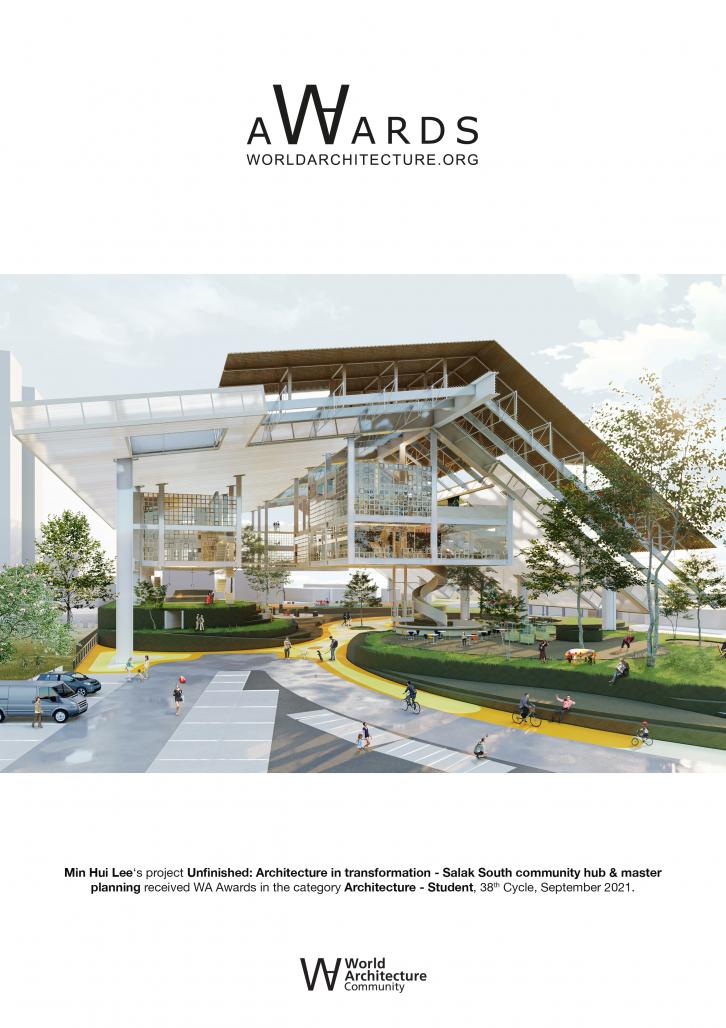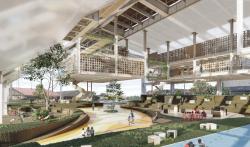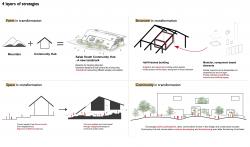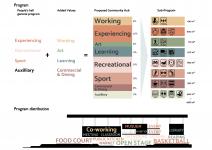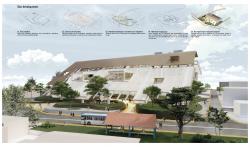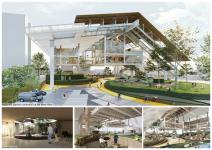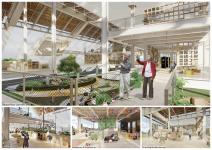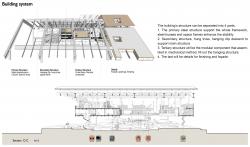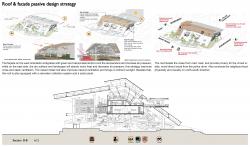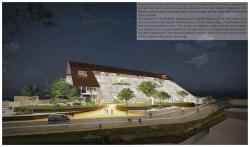Chinese New Villages is a unique type of settlement found only in Peninsular Malaysia. It was formed around 1948 to centrally manage squatters and prevent the Malaya communist party from gaining access to critical supplies and information. It cultivated countless generations of Malaysian Chinese. It is the treasure we should embrace and preserve. Unfortunately, with the urbanization, Chinese new villages face a series of problems, including losing population, the decline of the village, poorly maintained and outdated public infrastructure, and the loss of local identity and culture.
Salak South New Village located in Kuala Lumpur, Malaysia was selected to investigate. The design objectives involve 2 scales, architecture intervention – community hub and master plan proposal.
Master plan proposal - The proposed 3R strategy can be divided into three parts: Revive dying nodes, Reconnect nature and man, and Re-establish the public space system. Each part will target different layers of the element, aims to develop the village while preserving its unique local characteristic and revive the community. Together, the proposed master plan will recall local memory, enhance current life and prepare for the future. The adaptive public space forms a new urban village prototype - a village in the state of unfinished, continually evolve and adapt to different situations and not limited by time.
Community Hub - Salak South Community hub explores the idea of “Unfinished” and transformation in architecture. It aims to extract and translate the positive qualities of “Unfinished” into architectural design strategies to maximize its potential and create an architecture in transformation. It would make the community hub able to adjust, evolve, and adapt over time continuously.
The design strategies can be reflected on four layers: Form, structure, space, and community. Combining these layers empowers the user to engage in design, construction, reassemble, and transformation constantly. A public space that will never be finished and be more substantial and enriching with the people coming and going.
Salak south community hub and the proposed master plan will serve as a generator of historical memory and new events, reconnect man with nature, village, and city. Reclaim public space promotes social inclusiveness and is more resilient towards many aspects.
The concept of “Unfinished: architecture in transformation” is not just to solve the current issues but to design with the future in mind. Technology and paradigm shift fast, but construction is slow. That is why we need to create a design that is adaptive, transformative, and resilient that are never aim to be finished and stop developing after projects end. The result is healthier buildings and cities that improve quality of life, whatever the future may bring.
2021
0000
Building type: Community hub
Location: Kuala Lumpur, Malaysia
Built area: 4180m2
Program: Working, experiencing, art, learning, recreational, sports, commercial and dining, auxiliary
User: All
A few parameters are considered for the structural design of the community hub - assembly complexity, circular economy in architecture, and high adaptability.
Assembly complexity - It was essential to design a building structure that can be assembled on-site by locals, enable locals to actively participate in the progress of the place making, changing the relevance of creator and user
Circular economy and adaptability – Adopted DFD strategy and component-based design to make the community hub have better adaptability to respond to future changes, villagers can transform and renovate the community hub according to their needs financial condition the village.
The building's structure can be separated into three parts: Primary structure, secondary structure, tertiary structure + modular component, and details layer.
1. Primary structure: The large steel structure emanated from the horizontal infrastructure stripes of the site planning scheme and formed the superstructure of all architectural elements. Steel trusses and space frames enhance the stability of the framework.
2. Secondary structure: Hung from the steel superstructure, steel clips, and universal structure descend to support the primary steel trusses.
3. Tertiary structure + modular components: Wall, floor, opening are designed in modular. Assembled and fill out the shape of any architectural space in the hanging framework on site.
4. Details: Finishing and façade.
Supervisor: Prof.Zhu Wenyi
Unfinished: Architecture in transformation - Salak South community hub & master planning by MIN HUI LEE in Malaysia won the WA Award Cycle 38. Please find below the WA Award poster for this project.
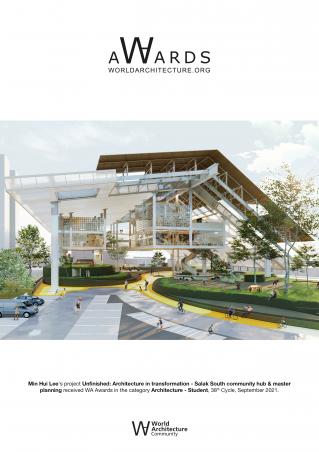
Downloaded 0 times.
Favorited 1 times

